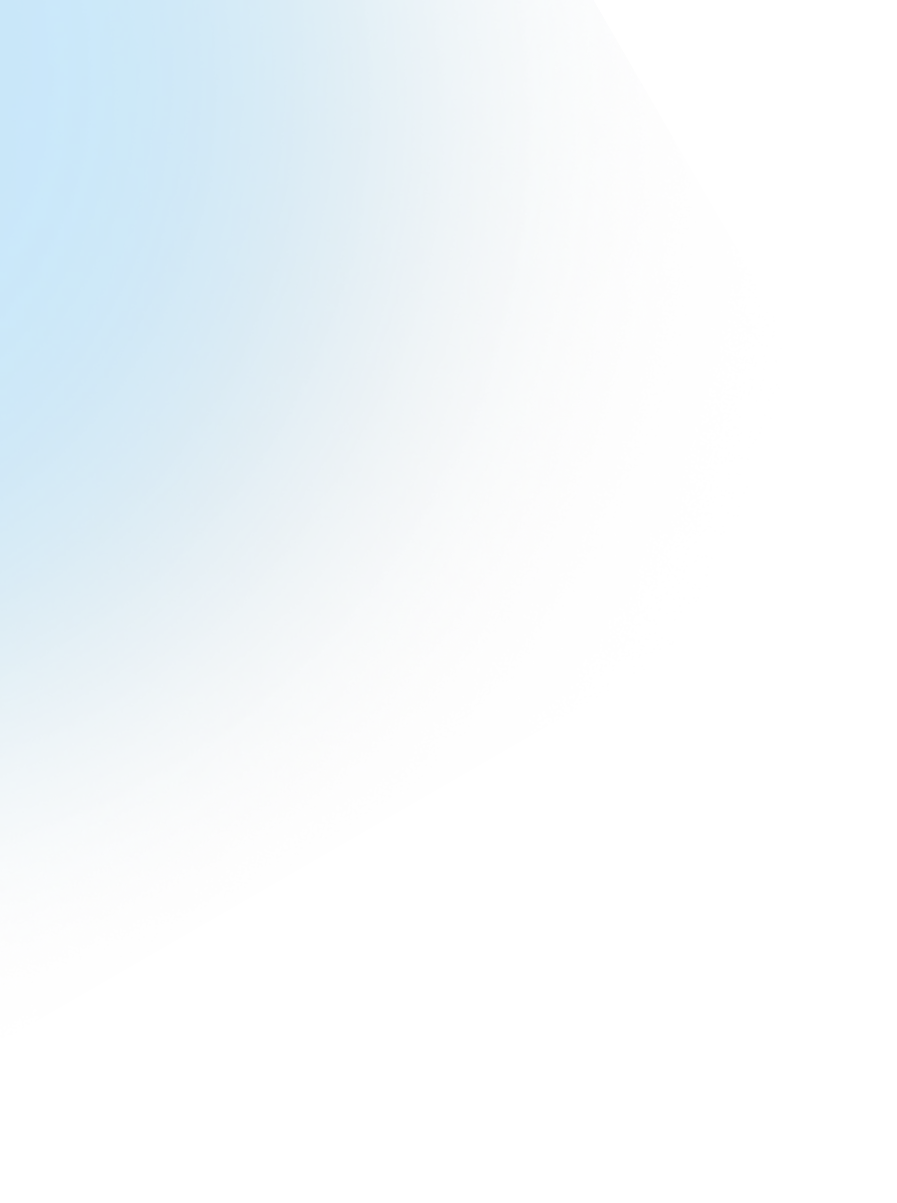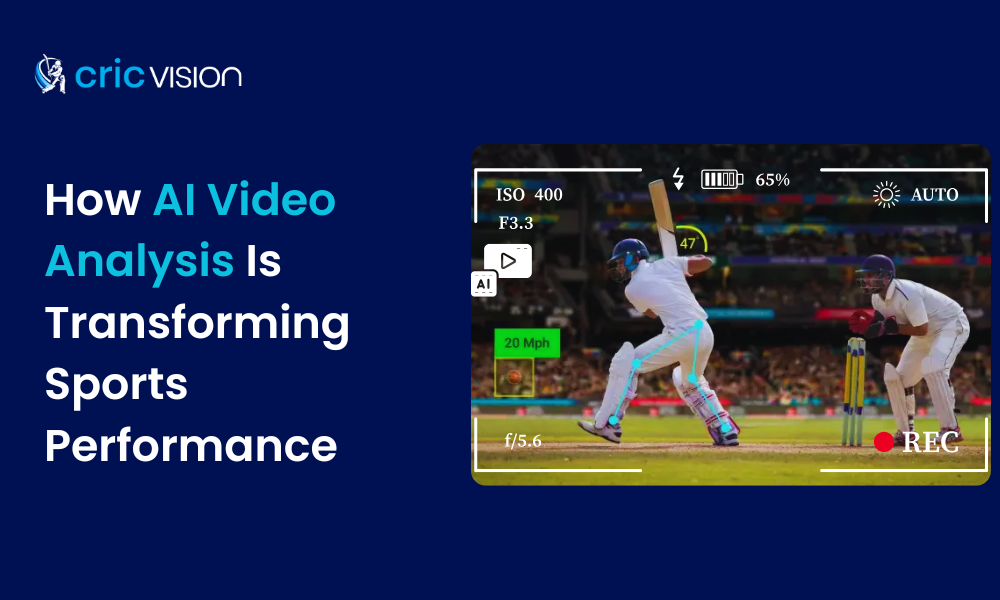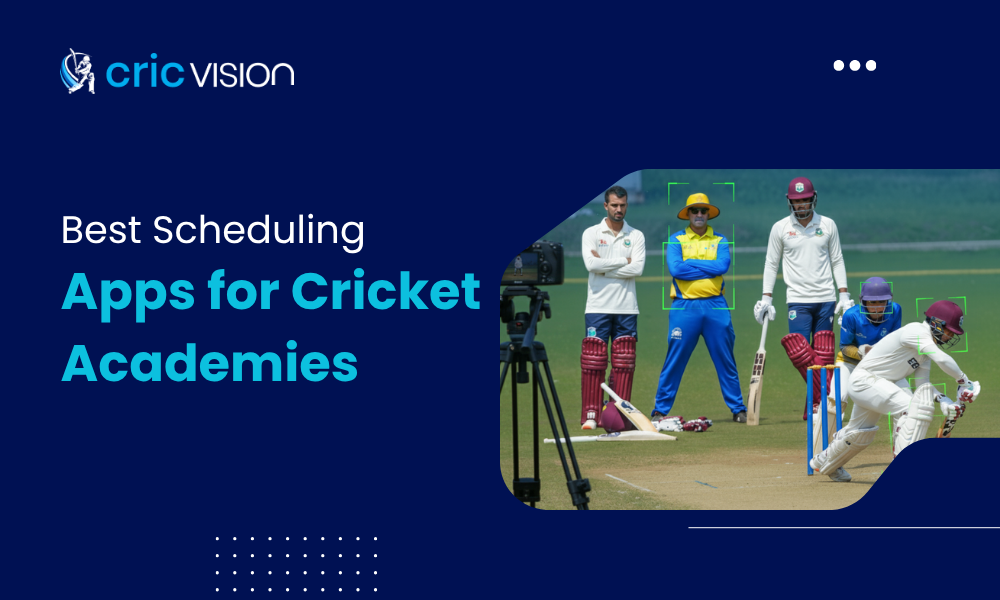Most batting mistakes are invisible at full speed. It can be a backlift that drifts a few degrees straighter than it should. Or, maybe, a contact made just 15 mm off the sweet spot. All of these reduce control, even if the ball looks well struck. That is why analysts use control percentage (how often a batter is in command of a shot) and false-shot percentage.
CricVision is a cricket video analysis app designed for AI-powered batting technique improvement. It breaks down every shot frame by frame, highlights technical cues, compares you with professional players, and creates a log that coaches can track remotely. Think of it as a video-first coach that sees details your eye misses.
What Key Metrics Predict Batting Quality?

- Control % / False-shot %: Fewer errors mean more runs over time. A 15% false-shot rate is normal in Tests, while T20 batters average around 75% control because of the attacking intent.
- Impact location and bat speed: Studies show that post-impact ball speed is explained mainly by two factors: where you hit the ball on the bat and how fast the bat is moving. Together they account for about 68% of the variation. Hitting the sweet spot at a good speed matters more than raw bat speed alone.
- Launch angle control: The angle of the bat at contact explains roughly 82.5% of the vertical launch angle. In simple terms, your timing and bat face position decide whether the ball stays on the ground or sails over the infield.
- Kinematic engine: The way your body uncoils matters. The separation between pelvis and chest at the start of the downswing, along with the lead elbow extending and the wrists uncocking, explains about 77.7% of maximum bat speed.
- Backlift reality check: Textbooks long promoted a straight backlift. But research shows only 12.5% of players actually use it. Around 87.5% lift the bat towards slips, and this lateral backlift is far more common among elite scorers.
How Does CricVision Measure Batting Technique?
When you upload practice or match clips, CricVision automatically classifies your shots, cover drives, pulls, cuts, and more. It overlays guides on your stance and swing, then flags issues. You will also see a stats dashboard that tracks shot quality and consistency, a pro-comparison mode, and a growing library of drills with video examples. Coaches can log in to add frame-by-frame notes and monitor progress over time.
This matters because the cues it tracks connect directly with the predictors above. For instance, bat speed, impact location, launch angle, and sequencing. You are not just fixing your stance to look “textbook.” Here, you are making adjustments that tie to the physics of scoring runs.
How Do You Capture Clean Data in Just One Session?
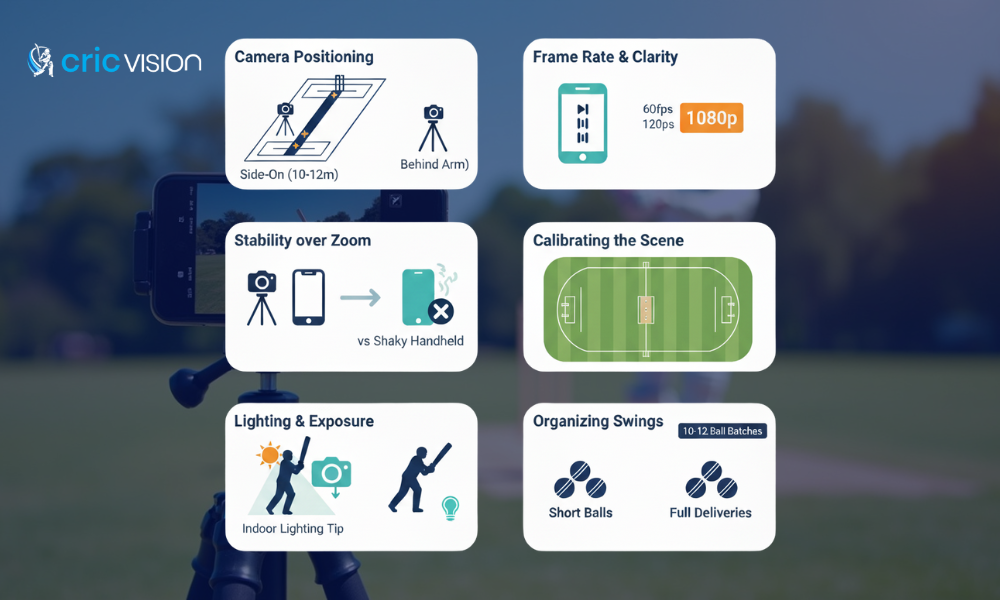
Good analysis starts with good video. Shaky, poorly lit, or badly framed footage will not give accurate results. The process does not need expensive gear, but you do need to follow a few basics. Once you set this up properly, you can repeat it in under ten minutes for every session.
Camera positioning and angles
The side-on angle should be your base. Place the camera 10-12 metres away at chest height, directly in line with the crease. This captures stride, head balance, and swing path. A second camera behind the bowler’s arm, about 5-7 metres back, is also useful. That view shows whether you are covering off stump and the exact angle of your bat at impact. Together, they give a complete picture.
Frame rate and clarity
Use slow motion where possible. At a minimum, record at 60 frames per second. This is enough to study the downswing and timing. If your phone can handle 120 fps, it is even better. You will be able to see the contact and launch angle frame by frame. Keep resolution at 1080p or higher. CricVision depends on sharp outlines of the bat and body for its measurements.
Stability over zoom
Always use a tripod or stable mount. Handheld videos might look fine in real time. However, even small shakes create errors in analysis. Position the tripod at chest height for side-on shots. Avoid digital zoom (it lowers quality). If you need the batter bigger in frame, move the tripod closer instead.
Calibrating the scene
For CricVision to measure angles correctly, it needs reference points. Mark the crease line with chalk or tape, and add a visible mark on the off-stump line. Keep both in the frame. These fixed points allow the software to map your swing path and compare sessions.
Lighting and exposure
Lighting often decides whether your footage is usable. Outdoors, set the camera so the sun is behind it, not behind you. Indoors, artificial lights can flicker in slow motion. Run a two-second test clip before recording a full session. Once the lighting is stable, lock the exposure so brightness does not change during the shot.
Organising your swings
Avoid a random mix of deliveries. Record in small batches, say 10 to 12 balls of the same type. For example, bowl only short-of-a-length balls at 120-125 km/h for one batch. Then move on to another set of full deliveries on off stump. CricVision can show clear patterns this way. If you struggle against short balls but play full ones well, that difference will stand out.
Think of this as creating your own “lab conditions.” You do not need special equipment beyond a phone, a tripod, and simple pitch markings. Once the setup is in place, you can focus more time on understanding your game through CricVision.
What Real Batting Problems Does CricVision Solve?
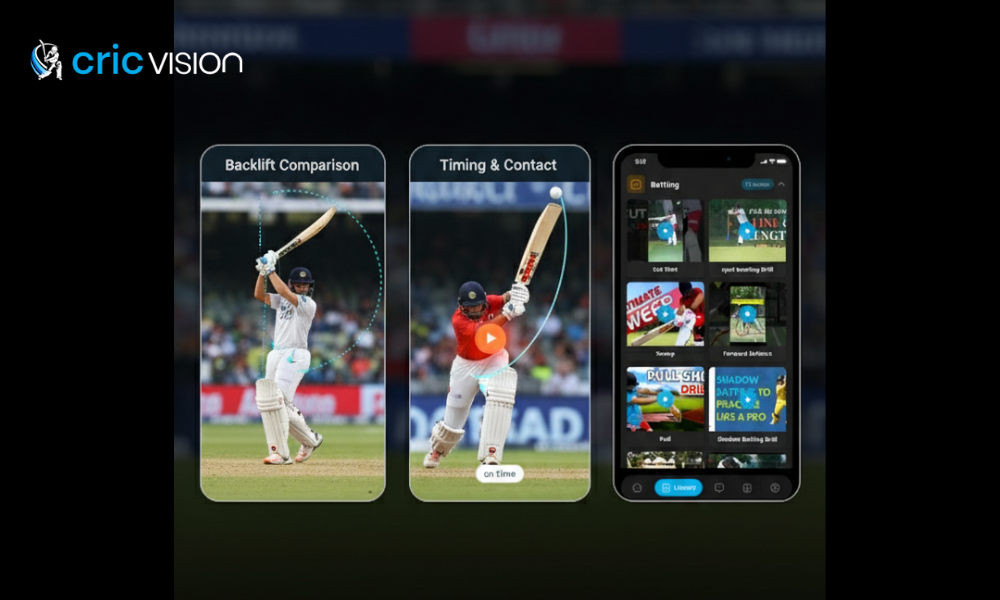
Use case 1 – My backlift looks neat, but my scoring arc is narrow
What CricVision shows: In your side-on clips, the bat face points straight back. The pro-comparison overlay highlights that pros often use a more lateral pick-up (toe pointing between keeper and 2nd slip).
What the science says: Research shows only about 12.5% of players keep a truly straight backlift. Around 87.5% lift laterally, and this becomes more common the higher you go from semi-pro to international. Many top scorers do not follow the old “straight back” rule.
What to try: Use CricVision frame scrub to pause at the “top of backlift.” Compare your bat face angle against the off-side. Practice a gentle lateral pick-up using one-hand drills. Cue yourself with “toe to 1st slip,” then re-record. The aim is to open more scoring options while still keeping a straight downswing through impact.
Use case 2 – I’m fine at 120 km/h, rushed at 140 km/h.
At 22 yards (20.12 m), a 140 km/h ball reaches you in about 0.52 seconds. At 150 km/h it is around 0.48 seconds. Timing errors at this pace show up in two ways:
- Late contact = open face, higher launch, toe-end hits.
- Early contact = closed face, squarer than intended.
What CricVision adds: Its contact-frame and bat-path overlays show whether you are late or early, and how close to the middle of the bat you struck the ball.
What the science says: Impact location + bat speed explain about 68% of post-impact ball speed. Increasing your sweet-spot rate matters more than just swinging harder. For bat speed itself, the “X-factor” (pelvis–thorax separation), lead-elbow extension, and wrist uncocking explain around 77.7% of maximum bat speed.
What to try: Use the kinematic traces to link gym work with batting drills. For example, pair anti-rotation and rotation exercises with bat-speed drills. Then, validate your progress with a video.
Use case 3 – I’m chasing power in T20, but edges have crept up.
Power vs Control defines T20 cricket. Control rates hover around 75%, but it is not just about avoiding mistakes. Champion teams consistently hit about 20% more sixes and 14% more fours than the rest, while actually taking around 5% fewer singles. The game is won by accepting risk, without letting control completely slip away.
With CricVision you can:
- Track control % by phase (Powerplay, middle overs, death) in practice games.
- Watch launch angles. Lab data shows vertical launch is about 82.5% explained by bat angle at impact. So train your contact point and face angle, not just “hit up.”
- Audit contact quality and aim to shift more of your big hits to true centre-face strikes. This is the biggest lever for ball speed.
How Do You Read CricVision’s Dashboards Effectively?
- Shot Quality vs Consistency: Think of quality as “how cleanly did I execute my plan?” and consistency as “how often did I repeat it this session?” Improve consistency first.
- Control % trend: If a change (new stance, new trigger) does not improve control by at least 5 percentage points over two sessions with similar bowling, it is probably cosmetic.
- Contact map: If impacts are clustered on the toe or splice, you are swinging too early or too late. Use the bat-path trace to adjust your timing, not your swing speed.
How to Apply These Insights in Real Matches
Analysis only matters if it shows up on the field. The key is to take what the data highlights and build it into training drills and match routines. Small and steady adjustments in practice usually carry over far better than big overhauls under pressure. If you want help shaping these insights for your own players or setup, feel free to reach out.
Frequently Asked Questions
Q: How accurate is smartphone video analysis compared to professional cricket academies?
A: Modern smartphones (60-120 fps) capture the same technical details as pro systems. With proper setup (10-12 m, chest height, stable tripod), analysis is highly reliable.
Q: Can CricVision help me fix my technique during practice sessions, or do I need to wait until after training?
A: Yes, CricVision gives real-time feedback. Record a few balls, review swing/contact points, adjust, and repeat-improvements can be seen in the same session.
Q: Will CricVision work for club-level players, or is it only useful for advanced batters?
A: It’s ideal for club and amateur players. The app identifies technical flaws, compares with pros, and tracks progress, helping all skill levels improve quickly.
Q: I keep getting bowled or LBW despite feeling like I’m playing straight. Can CricVision identify what’s going wrong?
A: Yes, it detects common issues like playing across the line, being too far from the ball, or head movement. Launch angle and swing path analysis show exactly what’s off.
